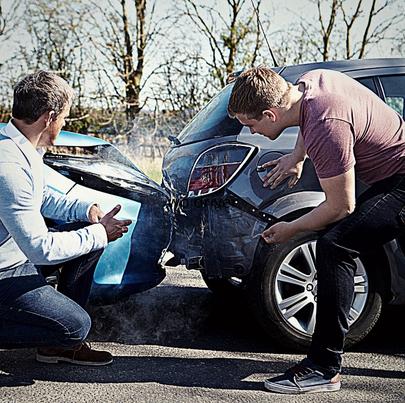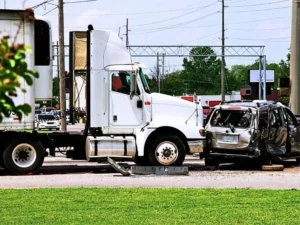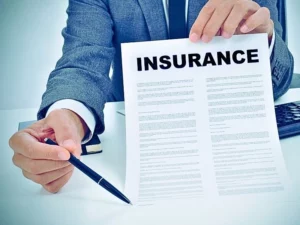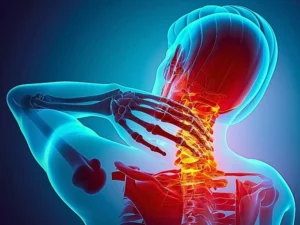If you have been in a crash in Chicago, you need to know how to determine liability in a car accident. After a motor vehicle collision, it can be difficult to figure out exactly what happened and who is responsible for paying for the damages. Determining liability can be even more difficult if you have been injured and are navigating medical care. A Chicago car accident attorney can help you determine who is responsible for paying for damages and injuries after a car accident.
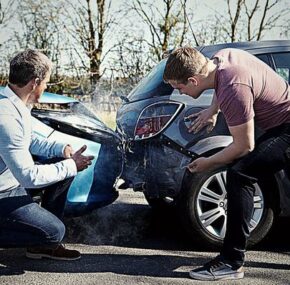
How Does Fault Affect a Car Accident Case in Illinois?
Some states have moved to a no-fault system for motor vehicle collisions. In a no-fault system, each driver is responsible for carrying personal injury insurance that covers his or her own injuries and damages after a car accident. In no-fault states, it does not matter who is at fault for causing the accident.
Illinois is an at-fault state. Unlike in no-fault states, determining liability in a car accident is important. Whoever is responsible for the crash is responsible for paying for the damages and injuries of all parties involved. Therefore, fault is a critical part of sorting out motor vehicle wrecks in Illinois.
How to Determine Fault in a Car Accident
Fault is usually determined by finding out who was negligent. All drivers owe a duty to the other drivers and passengers on the road to act in the same way a reasonable driver would act in a similar situation. If a driver breaches that duty and his or her breach causes damages or injuries to other drivers, the driver is responsible for paying those damages.
Sometimes determining who is negligent, and therefore at fault, in an accident is simple. If you run a stop sign and hit another car, you have breached your duty to act as another reasonable driver would. Therefore, you are negligent, and would likely be responsible for any damages you caused by running the stop sign.
When drivers break traffic laws and cause damages, their negligence is typically clear. However, sometimes drivers can act negligently even without breaking the law. For example, drivers might drive too fast in rainy weather when the roads are slippery. They may change lanes without leaving enough room between cars.
Comparative Negligence in Illinois Car Accident Claims
Determining liability in a car accident can be even harder when more than one driver contributed to the crash. Illinois law follows a comparative fault rule for car accidents. So, you can recover damages from a car accident even when your negligence contributed to the crash. However, your negligence must have contributed less than 50% to the cause of the accident. Further, the amount you can recover for your damages will be reduced by an amount equal to the percentage that your negligence contributed to the crash.
Using the Type of Accident to Determine Fault
Although determining liability in a car accident can be difficult, you can sometimes tell which diver is at fault based on the type of accident.
Motor vehicle crashes that point to a particular driver’s fault include:
Rear-End Accidents
In the case of a rear-end accident, the second car is almost always liable. The driver may be negligent for driving too fast to stop, following too closely to the car in front of him or her, or failing to look out for traffic.
In rare exceptions, the leading driver may be considered negligent for stopping short. However, even then, the second car will share at least a portion of the liability for the crash for following too closely. Drivers should maintain a reasonable distance between vehicles at all times, and would therefore have some liability under the comparative negligence rule.
Left Turn Accidents
A high percentage of car accidents occur in intersections. Vehicles turning left at an intersection can sometimes misjudge the distance of oncoming traffic, causing the turning vehicle to hit a car traveling straight. In these cases, the driver turning left is typically at fault. The turning driver was negligent for failing to look out for oncoming traffic.
Sideswipe Accidents
Sideswipe accidents occur when one driver changes lanes without keeping a proper lookout for other vehicles. Most states have statutes regarding changing lanes, which include rules prohibiting drivers from moving into an occupied lane. If a driver changes lanes without keeping a lookout for other traffic and hits another car, the driver changing lanes is almost always at fault and responsible for the resulting damages.
How to Prove You’re Not at Fault for an Accident
If you have been in a car wreck, it is easy to become upset and fail to gather the details you need to prove liability. Taking the following steps can help make sure that you can clearly show what happened in your accident.
Make Sure Everyone Is Safe
Of course, your priority after a car crash should be to ensure you and your passengers are safe. Check yourself for injuries. If you can move without further injuring yourself, check your passengers to see if they are injured. If you or your passengers are injured, you should call 911 and try to remain immobilized until help arrives. You and your passengers should also move away from the site of the accident and out of traffic.
Call 911
Even if you think you are injury free, you should call 911 to report the accident. The police will come to document the accident, take car accident photographs, gather witness information, and collect contact and insurance information for everyone involved. The police will also create an accident report with all the information about the accident. You should be sure to get a copy of the accident report for your records.
Talk to Witnesses
Gather contact information from witnesses to the accident if you can. Witnesses can help you understand what happened and also help you by telling the insurance companies what happened. The more people that can confirm how the accident occurred and who was at fault, the better.
Take Photographs
Taking car accident photos is a critical step in documenting the crash. Photographs are an excellent way to memorialize the position of the cars after the accident and the damage done to the vehicles. Visual evidence of the aftermath of the wreck can be powerful proof to convince an insurance company of the severity of the damages. They may also help prove how the accident transpired.
If you or your passengers have injuries, you should also document all your bruises and lacerations. You should also visit the emergency department of your primary care physician to ensure that your injuries are properly treated. Further, your doctors’ records can corroborate your injury claims.
Contact an Attorney
There is only so much you can do to help yourself after an accident. Although some people try to navigate the aftermath of a car accident themselves, the help of an experienced car accident attorney can be invaluable. If you are trying to prove that you are not at fault for a crash, a lawyer understands how liability works and what evidence you need to present. A car accident attorney can help defend you against having to pay for the other party’s damages.
How Can You Get a Fair Settlement After an Accident?
If you are not at fault in an accident, you may want to know how you can get the at fault driver to pay for your damages and injuries. The basic steps are the same as in other accidents in which you are trying to prove you are not at fault. You should check on everyone in your vehicle, call the police, talk to witnesses, take photographs, and contact an attorney.
An accident attorney will begin the process of bringing a car accident lawsuit. First, a lawyer will conduct his or her own investigation into the accident to determine who was at fault, and what he or she will need to prove it. The attorney may need to hire an accident reconstruction expert or other experts to help build a case.
Once the attorney has put together a case showing fault and damages, he or she will send a demand letter to the other driver’s insurance company or attorney. Usually, car accident claims are settled at some point between sending a demand letter and filing a lawsuit. However, if the claim fails to settle, the lawyer will then need to file a lawsuit and take the case to trial. Even after filing a lawsuit, most cases are settled before the trial begins.
How Much Is Your Claim Worth?
The value of your claim depends on many factors. The first basis of the value of your claim is the damage done to your vehicle. However, the amount you can recover for your damaged vehicle is almost always limited to the cost of the repairs or, in some cases, the replacement cost of the vehicle.
The bulk of a case’s settlement value will be based on your injuries. Common injuries in car accidents include:
- Whiplash injuries – In many car accidents, the occupants of the vehicle are slammed forward and then backward, putting pressure on the cervical spine. Whiplash often leads to herniated discs or a sprained or strained spine. This type of injury can be extremely painful and lead to long-term problems with pain, numbness, tingling, and headaches.
- Head injuries – Head injuries can be the most severe injuries, short of death, resulting from a car accident. Head injuries can range from mild to life-altering. Concussions are common injuries in car accidents and can lead to disorientation, disruption of executive function, debilitating headaches, and a sense of fogginess. In more severe crashes, head injuries can lead to the loss of cognitive function.
- Spinal cord injuries – Severe spinal cord injuries can result from serious car crashes, such as rollover crashes or crashes involving 18-wheelers. In the worst cases, auto accident victims may suffer a spinal cord injury, which often results in paraplegia or quadriplegia. This can cause the loss of movement in some or all of the victim’s body. People who suffer paralysis from a spinal cord injury will need specialized medical care and equipment for the rest of their lives. Such care is extremely expensive and should be taken into account in any settlement negotiation.
- Broken bones – Car crash victims may suffer from minor fractures of small bones, or they may suffer complex fractures of bones such as the femur, which is the large bone in the thigh and supports a person’s body weight. Fortunately, fractures will heal in time. More complex fractures may take more time to heal or require surgery to successfully set the broken bone.
- Disfigurement – Some collisions result in injuries leading to severe scars or disfigurement. These injuries may result from fires, road rash, or lacerations caused by broken glass or torn metal. In extreme cases, motor vehicle accident victims may lose portions of their skin and require skin grafts to fully heal their injuries. Car crash victims that are disfigured must deal with the physical ramifications of their injuries, as well as the mental and emotional ramifications.
- Death – Accident victims may die as the result of a car crash. In such cases, their surviving family members may recover for the loss of the value of their life.
The more severe the injuries, the larger the potential settlement will be. You should also be aware that your pain and suffering resulting from the car crash can also make up a portion of the value of your claim. There are different ways of calculating the value of a pain and suffering claim. An experienced accident attorney will know how to determine liability in a car accident case, as well as accurately calculate the value of your pain and suffering and demand and fair settlement for your case.

